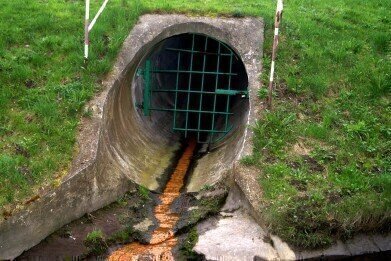Water/Wastewater
How Are Emerging Contaminants Monitored?
Jul 23 2022
The term emerging contaminants or contaminants of emerging concern (CECs) is used to refer to a specific set of chemical compounds which are found throughout the natural world. Although they can be naturally occurring and some have existed for millennia, many more are synthetic manmade creations that have only begun to infiltrate the environment in the last 200 years or so.
They are thusly referred to as “emerging” because either they have only recently begun to enter circulation in the environment, or because concerns about their potentially damaging properties over a prolonged period of time have only recently surfaced. In both cases, robust monitoring protocols must be put in place to quantify concentration levels and observe their behaviours within and their impacts upon the ecosystems around them.
Monitoring emerging contaminants in water
By far, the largest final destination for emerging contaminants is water. This includes surface water, groundwater, underground aquifers, municipal wastewater and even drinking water supplies. Maintaining a close eye on the concentrations of CECs in any of these locations is a key method of understanding more about them, but it’s especially important in a scenario where they may be imbibed by humans.
Thankfully, the science has advanced significantly in this respect in recent years. Breakthroughs in scientific techniques have seen water analysis move up a gear, with researchers using methods such as liquid chromatography coupled with mass spectrometry (LC-MS) to maximise the speed and sensitivity of their processes, delivering robust and reliable results in the process.
Monitoring emerging contaminants in soil
Meanwhile, CECs can also infiltrate soil samples and often do so prior to leaching into water sources. This can occur through improper waste disposal, agricultural crop spraying, heavy metal pollution and a variety of other activities. As well as infiltrating nearby or subterranean water sources, such contaminants can also compromise the soil quality and even bioaccumulate in crops cultivated upon it.
Thankfully, soil analysis practices have improved in tandem with those focusing on water samples and today, it’s possible to identify and quantify a wide range of CECs in a test site. Not only this, but advanced bioremediation techniques are also capable of neutralising or removing the offending substances, thus bringing the soil back to a healthy state. In cases where this is not possible, the CECs can be immobilised and the area contained so as to prevent further contamination.
Monitoring emerging contaminants in air
Finally, it’s also possible for emerging contaminants to infiltrate our airways. Although this is perhaps less common than soil or water contamination, CECs such as microplastics, synthetic organic chemicals and high-tech rare earth elements have been discovered in vapour samples and source emissions using the most advanced monitoring techniques available to scientists today.
Because it’s not as widespread as to the two aforementioned areas of contamination, research into CECs in our air is sorely lacking at the present time. However, there are an increasing number of studies ongoing which look to make up for that shortfall and delve further into how such contaminants become airborne, their potential impacts upon the environment and what we can do to monitor and mitigate them going forwards.
Digital Edition
IET 34.2 March 2024
April 2024
Gas Detection - Biogas batch fermentation system for laboratory use with automatic gas analysis in real time Water/Wastewater - Upcycling sensors for sustainable nature management - Prist...
View all digital editions
Events
Apr 30 2024 Melbourne, Australia
Apr 30 2024 Birmingham, UK
May 03 2024 Seoul, South Korea
May 05 2024 Seville, Spain
May 06 2024 Minneapolis, MN, USA


















